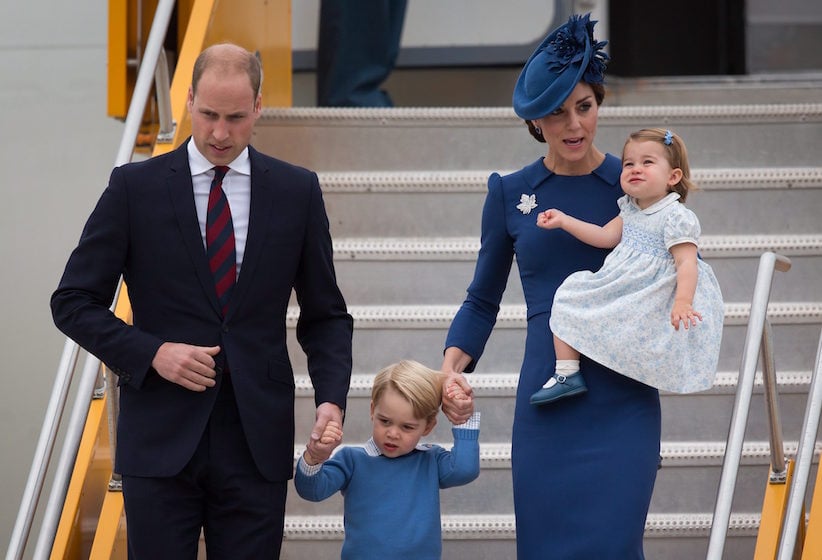Royal visit 2016: How is that for a royal arrival?
The symbolism and significance of William and Kate’s first steps in Canada
Share

The arrival of Prince William and Kate, duchess of Cambridge, to Canada may seem like just a formal preview to the meat of the visit—seeing beautiful wilderness areas, promoting social causes such as youth mental health, and meeting Indigenous peoples—but it sets the tone for the eight-day tour. In doing so, it upholds a long-standing royal tradition that marks such events with symbolism and significance.
Everything is scrutinized, from how they greet officials (relaxed, formal or stilted) to what they wear.
This royal tour is significant for being the first with both children, George and Charlotte. As well, Canada is the only nation they’ve visited twice. It’s not by acccident. Canada is the senior realm country: the Queen visited 23 times, more than any other nation and is openly affectionate, saying it was “good to be home” on her last trip in 2010.

For today’s arrival in Victoria, William and Kate chatted warmly with a small group of dignitaries (the Governor General, Prime Minister, premier and family). It was more of a reunion—David and Sharon Johnston were at Rideau Hall in 2011—than an event governed by stiff protocol.
Kate’s royal blue hat was embellished with maple leaves, an echo of the national symbol and similar to the red Maple Leaf hat worn for Canada Day 2011. The Canadian references didn’t stop there: Kate wore the Queen’s Maple Leaf brooch, as she did in 2011. The brooch was created by King George VI for his wife, Queen Elizabeth, for their 1939 tour. It’s been worn by generations of royal women since.
The Duchess of Cambridge and Princess Charlotte arrive into Victoria #royalvisitcanada pic.twitter.com/bqIxRduwLH
— Chris Jackson (@ChrisJack_Getty) September 24, 2016
She did the same in New Zealand, wearing the Queen’s fern brooch while deplaning with George and William in Wellington. The silver brooch was given to the Queen from the “women of Auckland” in 1953. It’s a small piece of jewellery, but for such high-profile visits, symbols matter.
What Kate wore: Catherine Walker coat, Gina Foster hat, Silver Fern brooch gifted to Queen. Thoughts? #RoyalVisitNZ pic.twitter.com/EuvoF9Klbd
— NZ Herald Lifestyle (@nzhlifestyle) April 7, 2014
Sometimes, they are more momentous. In 2011, just before William and Kate’s marriage, Queen Elizabeth II went on a state visit to the Republic of Ireland, the first by a monarch since 1911, when it was still part of Britain. After decades of violent conflict in Northern Ireland, it was a trip under tremendous scrutiny. The carefully chosen green hue of the Queen’s outfit set the tone for what would become a highly lauded trip of reconciliation.
…The Queen’s arrival to Ireland on May 17, 2011, in suitably green outfit.. pic.twitter.com/0cujekYq7D
— Happy and Glorious (@HappynGlorious) March 26, 2014
To reinforce the message of reconciliation, she spoke Irish at the start of the next day’s state dinner. Ireland’s president, Mary, McAleese, mouthed, “Wow,” knowing the significance of the British Queen speaking Ireland’s language. Today, that tour is widely hailed as a turning point in Anglo-Irish relations.
Arrivals are over in a few minutes, but their impact can last for a very long time.